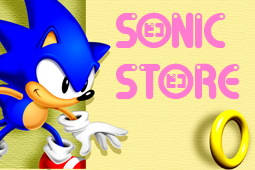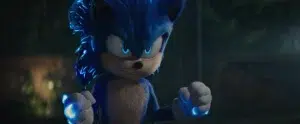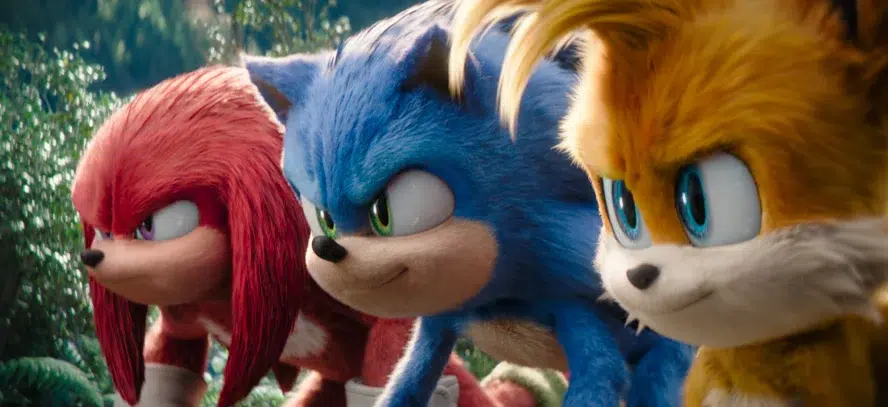An editorial concerning the different continuities, particularly fans’ reactions to them and Sega’s role in their creation.
Would the Real Sonic Continuity Please Stand Up?
Written by PorpoiseMuffins
Spoonstar@Comcast.net
11/9/2005
Revised 2/12/06
Note: If you are unfamiliar with the terms, SatAM refers to the “Sonic the Hedgehog” Saturday morning cartoon that broadcast on ABC. AoStH refers to the syndicated “Adventures of Sonic the Hedgehog” cartoon.
It’s a sensitive subject– So touchy, in fact, that some prefer to avoid the conflict while others jump at the opportunity to start flame wars about it. What I’m referring to is, of course, the great debate over which Sonic continuity is the “real†or “official†one, and I’m here to say that it’s a topic that should be discussed rather than swept under the rug.
I have been lurking around this fandom for some time now, and have seen plenty of locked threads on the subject. Why do fans get so defensive about this in the first place? It’s because, as human beings, we tend to reject what we don’t know and cling to what we do. As a 19 year old fan living in the US, I grew up with Sonic 1 & 2, AoStH, SatAM, and the Archie comics in the early 90’s, and I never had an issue reconciling these stories with one another. When Sega of Japan began to introduce its own new characters into the mix (Knuckles, Amy, etc.) and ignore the established ones I said, “That’s not Sonic!†and I felt betrayed. Where did all the characters I had grown up with (Sally, Bunny, Rotor, Antoine, etc.) all go? I imagine that the feeling is somewhat similar for those growing up today with the new characters, TV shows and games (Sonic Adventure, Heroes, Sonic X) when they run into someone talking about SatAM or take a look at the Archie comics and become confused by the obvious disjunction. It’s difficult for many people to accept all of the Sonic universes as equally valid when they are more familiar with one or have a strong preference for one over the other. In fact, they would often prefer not to give any of the other continuities a chance for fear that one might ruin their impression of the Sonic they know and love. I have felt this way before myself, but I realize that I can’t continue to be so closed-minded. This isn’t to say that I don’t have my own personal preferences when it comes to the little blue hedgehog, but I have managed to come to a genuine appreciation of all portrayals of Sonic.
The question is not about which continuity is “real†or “official.†That is a moot point since Sega officially licensed and approved them all (For better or for worse). Its also not an issue of which continuity is the “original,†and here’s why: None of the current continuities are really the “original,†including what we know as the current continuity (or the lack thereof) of the Sega games. There are many who claim that the Sonic game world created by Sega’s Sonic Team is the “original†continuity and the other stories are simply spin-offs of that. I would like to point out, however, that at the time of AoStH, SatAM, and the original Archie comics, the only Sonic games were Sonic 1 & 2. The basic plot line of these games is very simple: Sonic is an extraordinarily fast hedgehog who lives with his friends in the woods and fights the evil villain Dr. Ivo Robotnik who seeks to destroy Sonic’s home planet, capture his friends, and turn them into robots. In Sonic 2 we are introduced to the young two-tailed fox, Tails, who has looked up to Sonic and followed him everywhere since he was a baby fox.
Hmmm… This story sounds familiar, doesn’t it? That is because it’s the basis for the SatAM, Archie comics, Sonic the Comic, and AoStH continuities, as well as the current game series. All of the current continuities we now see branched out from these roots. That is the original story and those are the original characters (Sonic, Tails, and Robotnik/Eggman). I would argue that, with the exception of Sonic Underground (Which, in all honesty, doesn’t contradict the original storyline too badly, either), the game continuity has altered its own universe more any of the other continuities ever did. I cannot understand why some people will insist that Amy and Knuckles are “original†characters and that DiC/Archie swapped them out for their own. This is a huge misunderstanding. DiC (under the supervision of Sega of America) added characters to the series because Sonic, Tails, and Robotnik were the only characters at the time (Amy and Knuckles did not even exist yet). In fact, these characters were accepted as a part of mainstream Sonic “canon†for many years. The writers at DiC furthered the development of the Sonic story, but they did not alter what was already established. It is Sega (specifically Sega of Japan) who, for whatever reason, decided to go a different route and not incorporate the new characters, personality developments, and other elements from SatAM, the Archie comics, and AoStH into their own games, despite the fact that they licensed the franchise out in the first place. The fact is that America, Europe, and Japan had all developed separate versions of Sonic based around the original game story, but differing significantly in specific plot and character details. Interestingly enough, Sonic Spinball, released in both America and Japan, is clearly based on the SatAM television show, and Dr. Robotniks Mean Bean Machine is obviously based around the AoStH continuity. In the end, there was simply not enough of an attempt by the various branches of Sega to reconcile all of these different continuities, which eventually led to a great deal of confusion among fans. Clearly, there was an obvious lack of leadership, direction, and communication at Sega when it came to developing their beloved mascot.
As you can see, most (if not all) of the Sonic continuities are in basic agreement with the original story created by Segas Sonic Team. For example, both AoStH and SatAM followed the story of the original games (the games that had been created at the time) relatively well. Each cartoon was a different interpretation of the Sonic game world (One comedic and the other very serious), but they were both in agreement with the original plot. While SatAM and AoStH followed in the footsteps of this storyline, Sega of Japans own Sonic Team seemed to disregard the very same storyline that they created for themselves. For example, in an interview taken from Sega Visions Magazine prior to the release of Sonic the Hedgehog 2, Yuji Naka mentions Mobius as being Sonic’s home. While some insist that this was a mistranslation, the context of the quote makes it difficult to believe. Where is Mobius now? Suddenly, ever since Sonic Adventure, we’re on Earth with a bunch of humans in a city fighting Eggman. Even more details appear to have been altered or forgotten. SatAM is one of the only continuities that includes the roboticizer concept, which was obviously an integral part of the original canon in Sonic 1 & 2. Where is the roboticizer now? The tension between humans and technology (Robotnik/Eggman) vs. animals and nature (Sonic) that was such a prevailing theme in the early games has been all but lost in the modern series. In fact, Robotnik/Eggman has been reduced from a formidable enemy to a mere nuisance.
To those who support only the Japanese continuities and think anything made in America is irrelevant: I must argue that Sonic is very much an American character. Sonic was created to appeal to the American audience (which he did–much more so than the Japanese audience). Sega is very much an American company, just as it is a Japanese one (It was founded by 3 Americans in Honolulu and merged with another American company before moving to Japan and later creating Sega of America in the US). In fact, many of the Sonic games were created in America, including Sonic Team’s own Sonic 2. For those who still insist of remaining “purists:†In case you didn’t notice, the Sonic Mega Collection, compiled under the supervision of Sonic Team, includes the cover art from 10 years of the Archie comic series, the original versions of Sonic Spinball, Dr. Robotnik’s Mean Bean Machine, and all of the original American manual translations for the rest of the Genesis games. Now, I am not trying to illegitimatize the current Sonic Team game consistency by any means. Don’t get me wrong. I am only trying to defend the legitimacy of all the other continuities by showing that this whole convoluted mess was Sega’s own doing in the first place.
The reason why I feel so strongly that this needs to be discussed is because discussion keeps all of the continuities alive. Instead of keeping the discussion open and the characters alive in the world of mainstream Sonic, many of the fans of other continuities have hid away and formed little ‘support groups.’ To clarify, I am by no means encouraging fans to bicker among themselves, I simply feel that Sonic’s past should not be forgotten. If Sega had their way now, it seems that all the other continuities would die out. It has been speculated that this is the reason why DiC is not being allowed to release SatAM and AoSTH on DVD. There are already plenty of young fans who have no idea who the Freedom Fighters are, and Sega doesn’t appear to have any problem with that.
The bottom line is that Sega made this mess, and it’s up to them to fix it: to admit that there are different continuities and that they are all independent and equally valid. Give the other continuities the recognition they deserve and bring the Sonic fandom back together.
-PorpoiseMuffins
Sources: Sonic HQ, Sonic the Hedgehog 1 & 2 game manuals, Wikipedia, Sega of America, Concept Mobius
For further reading and background information on this subject, check out some of the excellent articles at Concept Mobius.
;



